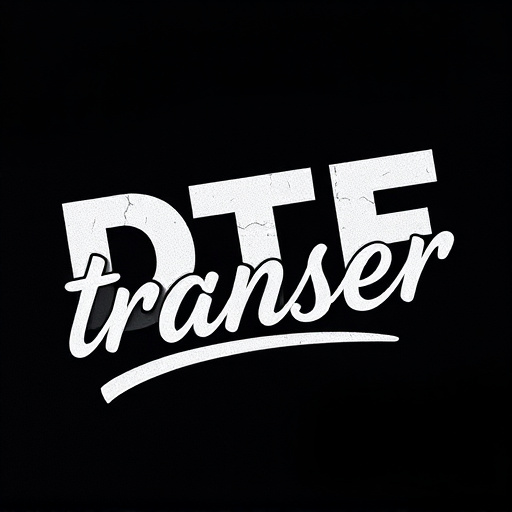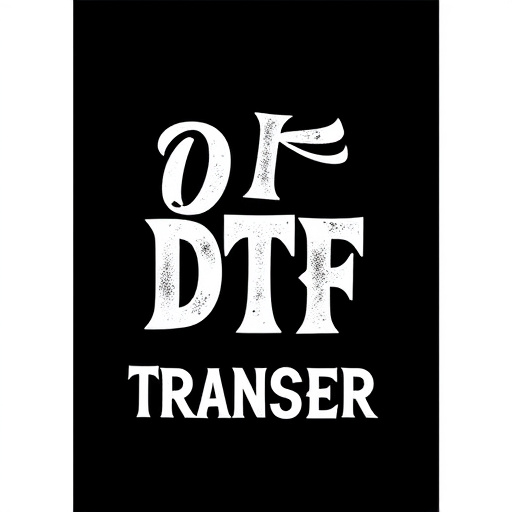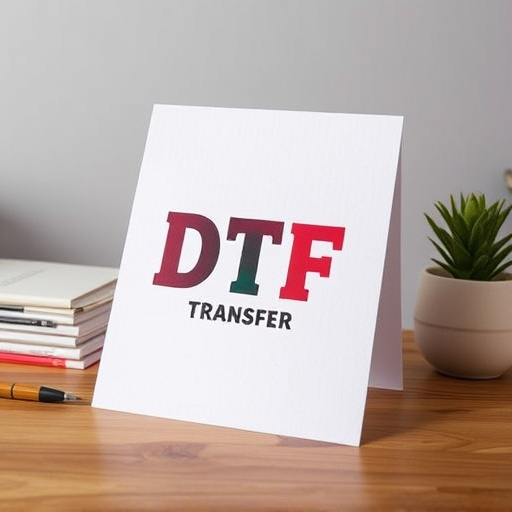Direct-to-film (DTF) transfer is a user-friendly printing method for hobbyists and artisans. By applying special ink or resin to a film and pressing it against a substrate with heat, users can create high-quality custom prints on materials like fabric, wood, and metal. DTF technology offers a cost-effective alternative to traditional printing methods, streamlining prototyping and production while enabling personalized gifts, home decor, and art installations. Choosing the right transfer film based on compatibility, quality, and intended use is crucial for optimal results. The DIY process involves designing or sourcing an image, cutting out the design, and applying heat to activate the adhesive on the desired surface. DTF opens a world of creative opportunities, fostering innovation in fields like fashion and home decor while requiring technical knowledge and artistic skill for mastering high-quality prints.
Direct-to-film (DTF) transfer printing offers a unique and accessible path for hobbyists and artisans to bring their creative visions to life. This article explores the exciting world of DTF, providing a comprehensive guide for beginners and experienced creators alike. From understanding the fundamentals of DTF transfer to discovering its versatile applications, you’ll learn how this technology empowers your artistic expression. We’ll navigate material choices, step-by-step processes, and offer insider tips to master DTF printing, unlocking endless possibilities for custom designs on various surfaces.
- Understanding Direct-to-Film (DTF) Transfer: A Beginner's Guide
- Benefits of DTF for Hobbyists and Artisans
- Choosing the Right Materials for Your DTF Prints
- Step-by-Step Process of Creating DTF Transfers
- Creative Applications of DTF Technology
- Tips and Tricks to Perfect Your DTF Printing Skills
Understanding Direct-to-Film (DTF) Transfer: A Beginner's Guide

Direct-to-film (DTF) transfer is a printing method that allows hobbyists and artisans to bring their creative designs directly onto various materials, such as fabric, wood, or metal, without the need for complex machinery or extensive preparation. This process involves applying a special ink or resin to the surface of a film, which is then pressed against the substrate to create a high-quality print. DTF transfer offers a user-friendly and accessible way for beginners to explore custom printing, enabling them to transform their ideas into tangible products with minimal effort.
For those new to DTF, understanding the basics is key. The process begins by designing or sourcing an image that you want to transfer. This design is then reversed, ensuring that the ink or resin will adhere properly when pressed onto the substrate. Next, a thin film coated with the printing material is prepared, and your design is precisely aligned on top. Once positioned correctly, a heat press is used to apply pressure and melt the ink or resin, fusing it into the substrate’s surface. The result is a vibrant, durable DTF print that can be used for a variety of projects, from custom clothing and home decor to functional art and craft items.
Benefits of DTF for Hobbyists and Artisans
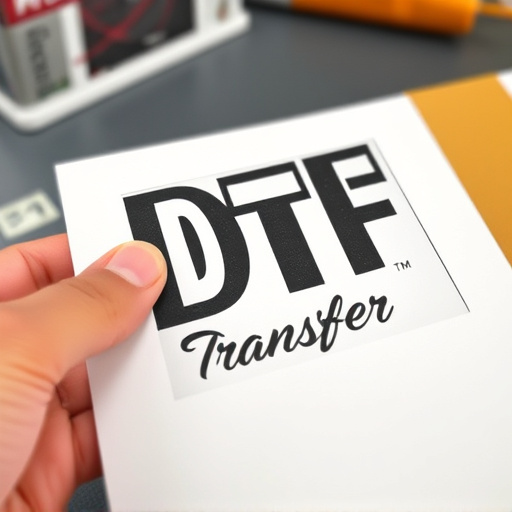
Direct-to-film (DTF) technology offers numerous advantages for hobbyists and artisans seeking to bring their creative visions to life. One of the key benefits is its accessibility; DTF Transfer methods allow individuals to create custom, high-quality prints on a variety of materials with ease. Whether it’s fabric, wood, or metal, DTF Printing enables users to produce intricate designs with precision, making it an ideal solution for personalized gifts, home decor, and even small-scale art installations.
Additionally, DTF provides a cost-effective approach to prototyping and production. Hobbyists can quickly test their design ideas without the need for expensive setup costs or specialized equipment. This efficiency is particularly appealing to independent artisans who want to focus on crafting unique items. With DTF, they can effortlessly adapt their creations, experiment with different materials, and offer diverse options to their customers, all while maintaining a high level of creativity and control over their work.
Choosing the Right Materials for Your DTF Prints
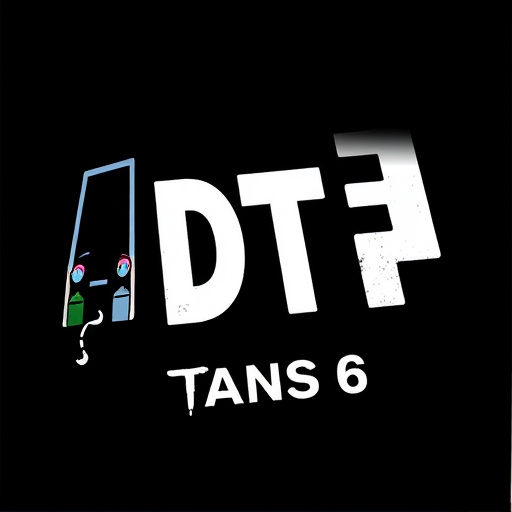
When selecting materials for DTF (Direct-to-Film) prints, it’s crucial to consider factors like compatibility with your printer, desired print quality, and intended use. The right DTF transfer film ensures crisp, vibrant colors and precise detail reproduction on various surfaces. Opt for high-quality films designed for hobbyists and artisans, which often offer excellent adhesion and weather resistance.
For optimal DTF prints, choose materials that match your project’s requirements. Whether you’re creating custom phone cases, decorative signs, or art pieces, different DTF transfer films cater to specific needs. Some films are best for smooth surfaces like glass or plastic, while others excel on rougher textures like wood or fabric. Always read product descriptions and reviews to ensure the DTF film aligns with your expected outcomes.
Step-by-Step Process of Creating DTF Transfers
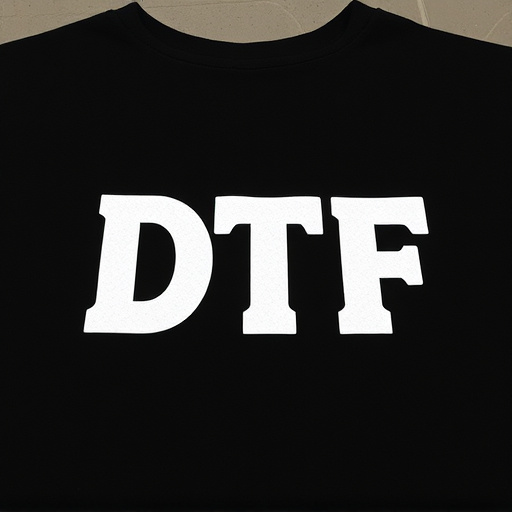
Creating Direct-to-Film (DTF) transfers is an accessible and creative way for hobbyists and artisans to bring their designs to life. The process involves several straightforward steps, making it an ideal DIY project for those new to printing or looking for unique ways to enhance their crafts.
First, prepare your design by ensuring it’s in a suitable format, typically a high-resolution digital image. Then, select the right DTF film—available in various materials and finishes—that aligns with your craft’s requirements. Next, print your design onto the DTF film using a compatible printer, usually an inkjet or laser printer. After printing, carefully cut out the design, ensuring precise lines. Once prepared, place the DTF transfer on your desired surface, such as fabric, wood, or paper, and use heat to activate the adhesive, following the manufacturer’s guidelines for optimal results. This method offers a versatile way to add intricate patterns, text, or graphics to various DIY projects, appealing to those seeking creative and personalised outcomes.
Creative Applications of DTF Technology
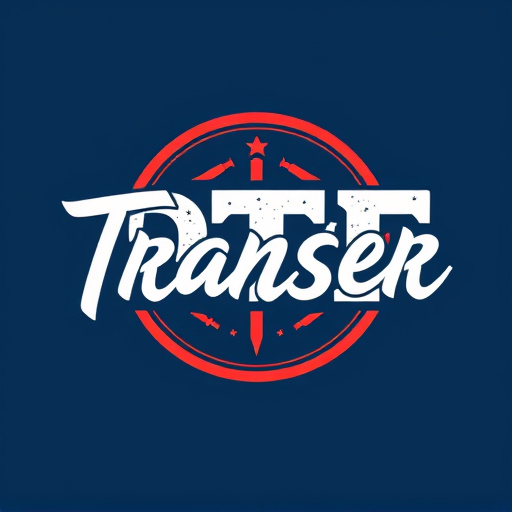
Direct-to-film (DTF) technology offers a plethora of creative applications for hobbyists and artisans, allowing them to bring their designs to life with ease. One of its most popular uses is in creating unique and personalized DTF transfers. This process enables users to apply intricate patterns and artwork directly onto various materials like fabric, wood, or metal. Imagine transforming ordinary items into extraordinary pieces by simply transferring your favorite designs or even custom illustrations.
DTF printing has democratized the creative process, empowering individuals to become their own designers and artisans. Artisans can use this technology to produce limited-edition DTF prints, whether it’s on canvas, paper, or even ceramics. The versatility of DTF allows for experimentation with different mediums, colors, and styles, fostering a sense of freedom and innovation. From fashion enthusiasts creating custom clothing designs to crafters personalizing home decor, the creative possibilities are endless.
Tips and Tricks to Perfect Your DTF Printing Skills
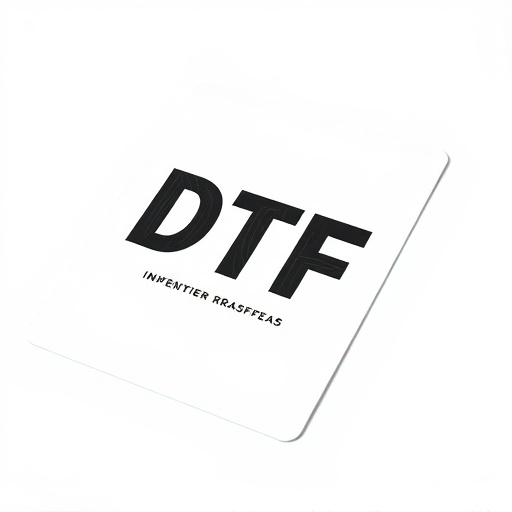
Mastering direct-to-film (DTF) printing techniques is an art in itself, but with practice and a few tricks up your sleeve, you can create stunning DTF transfers that pop right off the screen. The key lies in understanding the interplay between your design software, the film material, and the printing process. Start by ensuring your designs are vector-based, as they offer crisp lines and sharp corners essential for high-quality prints. Calibrate your printer settings precisely; optimal temperature, exposure time, and print speed can dramatically affect the final result. Experiment with different film types suitable for DTF to find the one that best suits your project’s needs—whether it’s for fabric, wood, or glass.
Another valuable tip is to prep your work surface thoroughly. A clean, smooth area prevents ink smudging and ensures consistent adhesion during printing. Consider using a heat press for more precise and even application of the DTF transfer, especially on porous materials. Take your time to adjust and test settings; practice makes perfect. Regularly cleaning your print head and ensuring proper maintenance will prolong the life of your printer. With these tips in mind, you’re ready to embark on creating breathtaking DTF prints that showcase your hobbyist or artisan skills.











